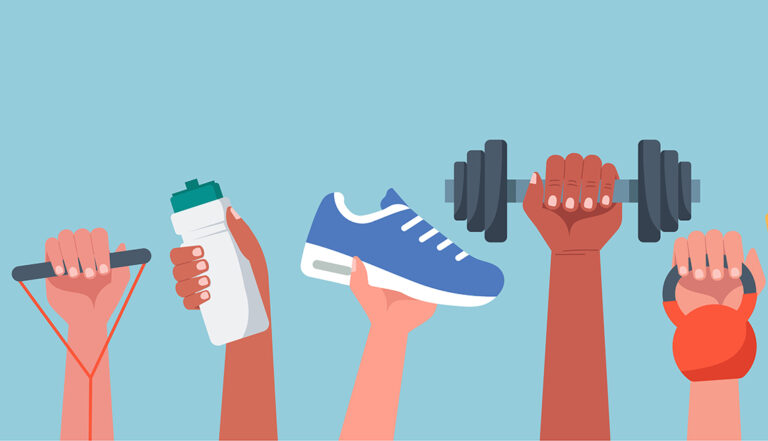[ad_1]
10. Set S.M.A.R.T. weight loss goals
Research shows you’ll up your odds of losing weight if you set goals that are:
Specific: Instead of more fruits and vegetables, you’ll eat five servings of fruit and vegetables every day.
Measurable: You’ll log 10,000 steps per day on your activity tracker.
Attainable: Rather than promising yourself you’ll go to the gym every day, start with three days a week.
Realistic: You’ll curb your soda habit by choosing sparkling water on four out of five occasions.
Time-bound: Mark the start date of your new eating plan on your calendar.
11. Set a S.M.A.R.T. goal to swear off ultraprocessed foods
Cured meats, baked goods, pretty much everything you find on the snack aisle—these are all out to sabotage your weight loss efforts. In a small study, participants were put on a diet of unprocessed foods (fruits, vegetables, lean meats, and whole grains) or ultra-processed foods. Participants were presented with the same amounts of overall calories, protein, and carbohydrates, and were allowed to eat as much as they wanted. After fourteen days, the dieters switched to the opposite plan.
The participants ate 500 calories a day more, on average, when they ate ultraprocessed fare than when they were given whole foods, and—no surprise—they gained, rather than lost weight.
12. Excuse-proof your exercise routine
Pick a gym close to home, enlist an exercise buddy, hire a personal trainer, schedule workouts as you would any must-keep appointment. On the days you’d rather do anything but work out, any—or all—of these will help keep you accountable.
13. Put your eating plan on autopilot
Advance meal prep is one of the easiest ways to stick to any eating plan. Set aside a few hours over the weekend to prep what you need for the week ahead: quinoa or brown rice, beans or lentils, roasted vegetables, grilled chicken breasts—these can all be cooked in advance, stored in the fridge and reheated on the fly.
14. Try HIIT
All cardio — including walking, cycling and jogging — counts, but alternating between low-intensity and high-intensity moves has been shown to provide a greater boost to your metabolism than moderate-intensity exercise alone. If you work in high-intensity interval training (HIIT) in the morning, research shows, you may get the most effective metabolism boost for the rest of your day.
15. Eat more whole grains
Whole grains such as oats, quinoa, and brown rice contain all the parts of the kernel—even the tougher, harder-to-digest bits—so your body uses more energy to break them down. When study participants ages 40 to 65 consumed the same number of calories, but swapped refined white flour and rice for whole grains, they burned nearly 100 extra calories per day.
16. Get plenty of protein
It isn’t just lack of physical activity that leads to a loss in muscle mass; inadequate protein intake also figures in. Seek out high-quality protein sources such as eggs and low-fat meats, as well as possible high-quality nutritional supplements, suggests Lofton. A study published in 2020 in The American Journal of Clinical Nutrition found that a diet higher in protein was associated with less loss of muscle mass over three years in women ages 70 to 79, particularly Black women. Another study suggests that eating equal amounts of protein at all three meals boosts muscle strength and, by extension, metabolism in adults over 67.
17. Sit less
Whether it’s because of stiff joints, low energy, or lack of time, we become less active as we get older, research suggests. A study published in 2019 in the Journal of Geriatric Physical Therapy suggests that older adults spend 60 to 80 percent of their waking hours sedentary. No surprise: that impacts weight loss.
What is surprising: It isn’t just the major sweat sessions that burn calories. In a study published in the journal Nutrients, researchers looked at the effect of walking speed on weight loss in previously sedentary postmenopausal women. Their findings suggest that although total body fat is lost at all speeds, the change is initially greater in slow walkers (defined by the researchers as about 3.5 miles per hour) who are overweight. Not sure how physically active you are over the course of the day? Wear an accelerometer to track your steps and intensity of daily activity, Lofton suggests.
18. Eat until you’re satisfied
Many of us wonder, “Should you eat until you are full?” The answer is, “Mind your hara hachi bu point.” In Japanese, this means to eat until you’re 80% full. Your aim should be to feel satisfied and not hungry anymore, rather than full, the Cleveland Clinic recommends.
19. Keep your metabolism humming
Conventional wisdom has long held that metabolism slows with age, but research challenges that assumption. According to a study published in 2021 in the journal Science, metabolism actually holds steady from ages 20 to 60 — so long as your muscle mass doesn’t change — then declines by about 0.7 percent a year after 60. Though seemingly insignificant, that less-than-a-percentage-point-per-year slowdown can add up over the years and have an impact, Yancy says.
Your resting metabolic rate — meaning the number of calories your body burns when you’re doing nothing — can decrease if your muscle mass decreases as you age, Lofton says. If we don’t adjust our eating and exercise habits to accommodate that metabolic change, the weight can creep up over the years.
20. Rethink happy hour
It isn’t just the calories in that glass of wine that add up over time; research shows that booze can do a number on all your good intentions. One study suggests that alcohol can trigger hunger signals in the brain, leading to an increased urge to eat more.
Editor’s Note: This article, originally published June 15, 2021, has been updated to reflect new information.
[ad_2]
This article was originally published by a www.aarp.org . Read the Original article here. .


